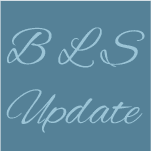 Paycheck Protection Provisions of the Keeping Workers Paid and Employed, Health Care System Enhancement and Economic Stabilization Section – What You Need to Know
Paycheck Protection Provisions of the Keeping Workers Paid and Employed, Health Care System Enhancement and Economic Stabilization Section – What You Need to Know
After much debate, Congress passed the Coronavirus Aid, Relief and Economic Security Act (the CARES Act) with a price tag of roughly $2.2 billion! We covered Individual Taxpayer Provisions and Business Provisions in previous blog posts. Title I of the Act includes the Paycheck Protection Program which among other things provides the authority for the Small Business Administration (SBA) to make loans to small businesses, including nonprofits, for which the federal government will guarantee 100% through the end of 2020 and then to 75 percent for loans exceeding $150,000 and 85 percent for loans equal to or less than $150,000. The Act also provides terms for loan forgiveness. Here is what you need to know now.
Loan Eligibility
Those eligible for loans as a small business, 501(c)(3) nonprofit, a 501(c)(19) veteran’s organization, or Tribal business concern described in section 31(b)(2)(C) of the Small Business Act with not more than 500 employees, or the applicable size standard for the industry as provided by SBA, if higher.
Also eligible are sole-proprietors, independent contractors, and other self-employed individuals as eligible for loans.
The act allows businesses with more than one physical location that employs no more than 500 employees per physical location in certain industries to be eligible and is below a gross annual receipts threshold in certain industries to be eligible. It also waives affiliation rules for businesses in the hospitality and restaurant industries, franchises that are approved on the SBA’s Franchise Directory, and small businesses that receive financing through the Small Business Investment Company (SBIC) program.
Covered Loan Period
The covered loan period begins on February 15, 2020, and ends on June 30, 2020.
Maximum Loan Amount
The Act sets the maximum loan amount at $10 million through December 31, 2020, and provides a formula by which the loan amount is tied to payroll costs incurred by the business to determine the size of the loan.
Allowable Uses of the Loan
Specifies allowable uses of the loan include payroll support, such as employee salaries, paid sick or medical leave, insurance premiums, and mortgage, rent, and utility payments.
The Act provides delegated authority, which is the ability for lenders to make determinations on borrower eligibility and creditworthiness without going through all of SBA’s channels, to all current 7(a) lenders who make these loans to small businesses, and provides that same authority to lenders who join the program and make these loans. For eligibility purposes, the Act requires lenders to, instead of determining repayment ability, which is not possible during this crisis, to determine whether a business was operational on February 15, 2020, and had employees for whom it paid salaries and payroll taxes, or a paid independent contractor.
Limitations and Requirements on Borrower
- The Act provides a limitation on a borrower from receiving this assistance and an economic injury disaster loan through SBA for the same purpose. However, it allows a borrower who has an EIDL loan unrelated to COVID-19 to apply for a PPP loan, with an option to refinance that loan into the PPP loan. The emergency EIDL grant award of up to $10,000 would be subtracted from the amount forgiven under the Paycheck Protection Program.
- The Act requires eligible borrowers to make a good faith certification that the loan is necessary due to the uncertainty of current economic conditions caused by COVID-19; they will use the funds to retain workers and maintain payroll, lease, and utility payments; and are not receiving duplicative funds for the same uses from another SBA program.
Other Key Loan Features – the Act
- Waives both borrower and lender fees for participation in the Paycheck Protection Program.
- Waives the credit elsewhere test for funds provided under this program.
- Waives collateral and personal guarantee requirements under this program.
- Outlines the treatment of any portion of a loan that is not used for forgiveness purposes. The remaining loan balance will have a maturity of not more than 10 years, and the guarantee for that portion of the loan will remain intact.
- Sets a maximum interest rate of four percent.
- Ensures borrowers are not charged any prepayment fees.
- Allows complete deferment of 7(a) loan payments for at least six months but not more than a year.
- Provides guidance for loans sold on the secondary market.
- Increases the maximum loan for a SBA Express loan from $350,000 to $1 million through December 31, 2020, after which point the Express loan will have a maximum of $350,000.
- Requires Veteran’s fee waivers for the 7(a) Express loan program to be permanently waived.
Loan Forgiveness
The Act states that the borrower will be eligible for loan forgiveness equal to the amount spent by the borrower during an 8-week period after the origination date of the loan on payroll costs (including additional wages paid to tipped employees), interest payment on any mortgage incurred prior to February 15, 2020, payment of rent on any lease in force prior to February 15, 2020, and payment on any utility for which service began before February 15, 2020.
- Amounts forgiven may not exceed the principal amount of the loan.
- Eligible payroll costs do not include compensation above $100,000 in wages.
- Forgiveness on a covered loan is equal to the sum of payroll costs plus any payment of interest on any covered mortgage obligation (but does not include any prepayment of or payment of principal on a covered mortgage obligation) plus any payment on any covered rent obligation and any covered utility payment, during the covered 8-week period compared to the previous year or time period, proportionate to maintaining employees and wages.
The amount forgiven is to be reduced proportionally by any reduction in employees retained compared to the prior year and reduced by the reduction in pay of any employee beyond 25 percent of their prior year compensation. To encourage employers to rehire any employees who have already been laid off due to the COVID-19 crisis, borrowers that re-hire workers previously laid off will not be penalized for having a reduced payroll at the beginning of the period.
Other Key Points
- The Act requires that the borrowers verify through documentation to lenders their payments during the period. Lenders that receive the required documentation will not be subject to an enforcement action or penalties by the Administrator relating to loan forgiveness for eligible uses.
- Upon a lender’s report of an expected loan forgiveness amount for a loan or pool of loans, the SBA will purchase such amount of the loan from the lender.
- Canceled indebtedness resulting from this section will not be included in the borrower’s taxable income.
- Any loan amounts not forgiven at the end of one year is carried forward as an ongoing loan with terms of a max of 10 years, at max 4% interest. The 100% loan guarantee remains intact.
We are committed to helping you through this maze of new rules. Please feel free to contact your BLS Team Member directly or email us at info@belfint.com with questions and assistance.
Stay Safe.
Jordon Rosen and Your BLS Team
